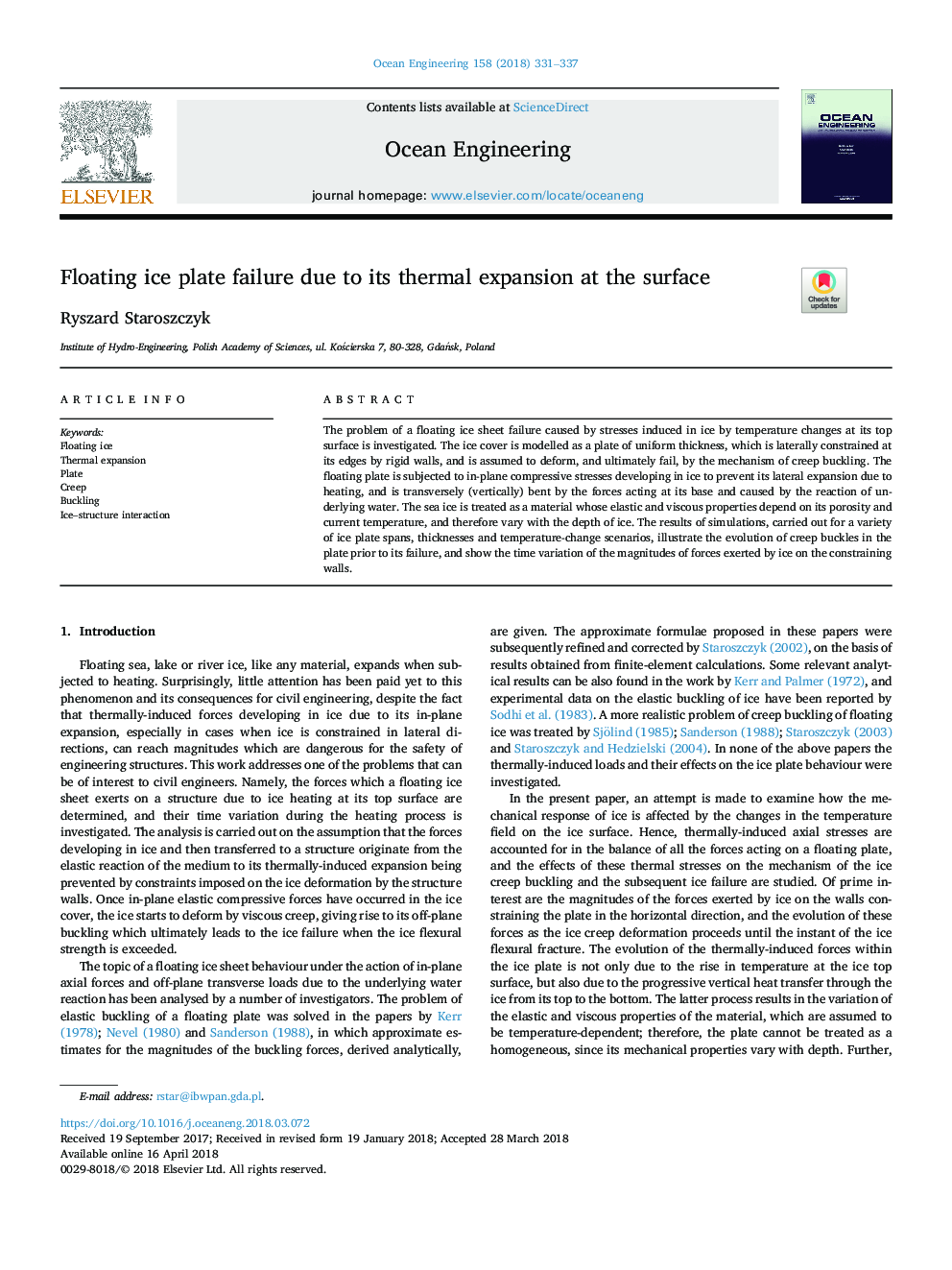| Article ID | Journal | Published Year | Pages | File Type |
|---|---|---|---|---|
| 8062442 | Ocean Engineering | 2018 | 7 Pages |
Abstract
The problem of a floating ice sheet failure caused by stresses induced in ice by temperature changes at its top surface is investigated. The ice cover is modelled as a plate of uniform thickness, which is laterally constrained at its edges by rigid walls, and is assumed to deform, and ultimately fail, by the mechanism of creep buckling. The floating plate is subjected to in-plane compressive stresses developing in ice to prevent its lateral expansion due to heating, and is transversely (vertically) bent by the forces acting at its base and caused by the reaction of underlying water. The sea ice is treated as a material whose elastic and viscous properties depend on its porosity and current temperature, and therefore vary with the depth of ice. The results of simulations, carried out for a variety of ice plate spans, thicknesses and temperature-change scenarios, illustrate the evolution of creep buckles in the plate prior to its failure, and show the time variation of the magnitudes of forces exerted by ice on the constraining walls.
Related Topics
Physical Sciences and Engineering
Engineering
Ocean Engineering
Authors
Ryszard Staroszczyk,
